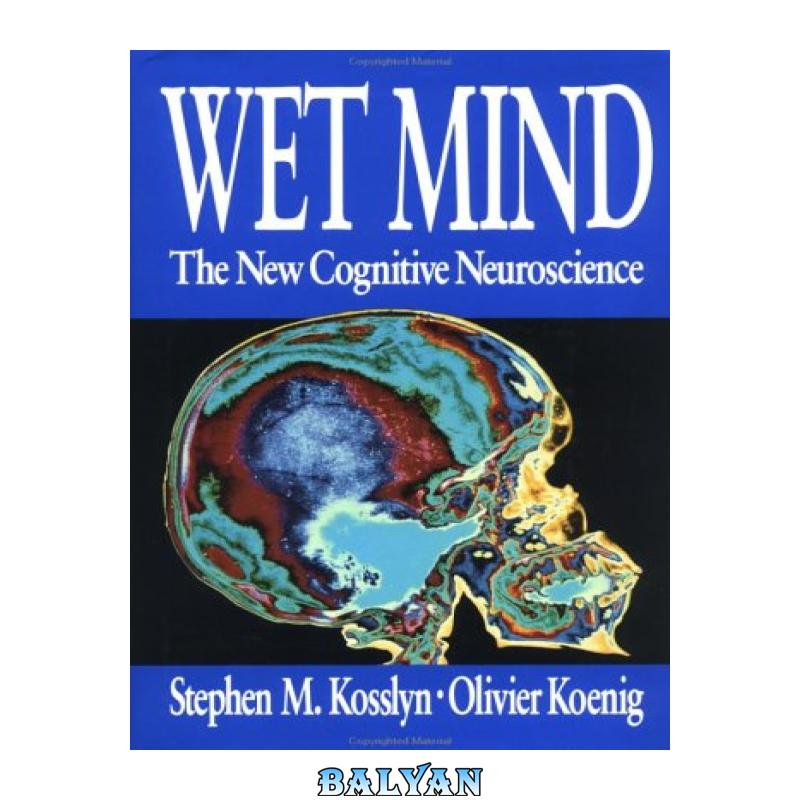
دانلود کتاب Wet Mind (به فارسی: ذهن مرطوب) نوشته شده توسط «Stephen M. Kosslyn»
اطلاعات کتاب ذهن مرطوب
موضوع اصلی: 1
نوع: کتاب الکترونیکی
ناشر: Free Press
نویسنده: Stephen M. Kosslyn
زبان: English
فرمت کتاب: pdf (قابل تبدیل به سایر فرمت ها)
سال انتشار: 1992
تعداد صفحه: 616
حجم کتاب: 30 مگابایت
کد کتاب: 9780029175958
نوبت چاپ: 1
توضیحات کتاب ذهن مرطوب
پنج اصل شبکه های عصبی: 1. تقسیم کار. از آنجایی که اتصالات بین ورودی و خروجی می تواند با یکدیگر تداخل داشته باشد، کارآمدتر است که شبکه های جداگانه نگاشت های مختلف را انجام دهند. 2. مدولاریت ضعیف: شبکه های عصبی مجزا در یک سیستم بزرگتر مستقل و مجزا نیستند. می توان جعبه سیاه شبکه عصبی را تجزیه و تحلیل کرد و متوجه شد که چگونه یک کار خاص را انجام می دهد. این کار توسط شخصی که آن کار را تعریف می کند و نگاشت ورودی/خروجی را تکمیل می کند، از پیش تعیین می شود. شبکه ها در تعمیم دادن عالی هستند، اما هر وظیفه ای را نمی توان شناخت. ما در مورد مفاهیم یک نظریه با مشاهده نحوه رفتار یک مدل می آموزیم. هر چه مدل می تواند با الگوی پاسخ ارگانیسم به محرک مطابقت داشته باشد، مدل را جدی تر می گیریم. تمرین منطقی این است که تجزیه و تحلیل شود که کدام زیرسیستم پردازشی یک رفتار خاص را ایجاد می کند. 3. رابطه عملکردی بین زیرسیستم ها. ما فرض میکنیم که گروهی از شبکهها ممکن است برای محاسبه نگاشتهای ورودی/خروجی پیچیده کار کنند و بنابراین یک زیرسیستم پردازشی ممکن است ساختار داخلی داشته باشد. در برخی موارد، همان زیرسیستم ممکن است عضوی از بیش از یک زیرسیستم پردازشی باشد. برخی از قسمتهای مغز مانند حروفی در جدول کلمات متقاطع هستند که به عنوان اجزای بیش از یک کلمه عمل میکنند و به معنای شکسته شدن ماژولار هستند. با این حال، یک ورودی/خروجی شبکه برای محاسبه یک تابع کار می کند. 4. محلی سازی در مغز: اعضای حیاتی شبکه در ناحیه خاصی از مغز محلی سازی می شوند. با این حال، لازم نیست همه نورونهایی که زیر یک محاسبات انجام میدهند در یک مکان باشند. 5. ارضای محدودیت ها: به نظر می رسد مغز از انواع مختلف اطلاعات به طور همزمان استفاده می کند و محدودیت ها را به طور همزمان برآورده می کند.
ادراک بصری: یک محرک بصری بر اساس جابجایی چشم، تصویر را به پنجره توجه بافر بینایی می آورد. پنجره توجه، ناحیه ای از بافر بصری را برای پردازش دقیق انتخاب می کند. این الگو به دو زیر سیستم ارسال می شود: سیستم شکمی و سیستم پشتی. سیستم شکمی از لوب اکسیپیتال به سمت لوب تمپورال تحتانی اجرا می شود. سیستم شکمی اطلاعات مربوط به ویژگی های کلیدی اشکال، رنگ ها و بافت ها را رمزگذاری می کند. سیستم پشتی از لوب اکسیپیتال تا لوب های جداری اجرا می شود. سیستم پشتی اطلاعات مربوط به روابط خاص، حرکت راهنما و ویژگی های خاص را رمزگذاری می کند. زیرسیستم پیش پردازش، ویژگیهای غیرتصادفی، مانند لبههای متقارن، خطوط موازی، و نقطه در قسمت جلو و واحدهای ادراکی، مانند نواحی همرنگ یا لکههایی را که در گذشته مشخص شدهاند، استخراج میکند. چرخه آزمون فرضیه تا زمانی که اطلاعات کافی برای دخیل کردن یک شی خاص در حافظه انجمنی رمزگذاری شود، تکرار می شود.
خروجی های پشتی و شکمی در حافظه انجمنی با هم می آیند. الگوی حافظه تداعی منطبق است و معنی، نام، مقوله و احساس در مورد شی را می دهد. تطبیق الگوی حافظه تداعی فرآیندی برای تشکیل یک فرضیه، تأیید فرضیه، و تصحیح و تلاش مجدد در صورت اشتباه است. تطابق حافظه انجمنی دقیق نخواهد بود. حافظه انجمنی باعث تغییر توجه می شود که در آن بخش اطلاعاتی از جستجو باید وجود داشته باشد. به عنوان مثال، الگوهای حرکات چشم مشاهده شده هنگام مطالعه تصویری از صورت یک فرد نشان می دهد که مغز از اطلاعات جستجوی کلیدی برای شناسایی استفاده می کند. تغییر توجه چشم را به مکان های کلیدی بخش برای جلب توجه می برد.
Visual Perception: A visual stimulus based on the eye shifting brings the image into the attention window of the visual buffer. The attention window selects some region of the visual buffer for detailed processing. The pattern is sent to two subsystems: the ventral system and the dorsal system. The ventral system runs from the occipital lobe down to the inferior temporal lobe; the ventral system encodes information about key properties of shapes, colors, and textures. The dorsal system runs from the occipital lobe up to the parietal lobes; the dorsal system encode information about special relationships, guide movement, and special properities. The preprocessing subsystem extracts nonaccidental properties, such as, symmetrical edges, parallel lines, and point at the front and perceptual units, such as regions of the same color or blotches that have been proven distinctive in the past; hypothesis testing cycle is repeated until enough information has been encoded to implicate a particular object in associative memory.
The outputs of the dorsal and ventral come together at the associative memory; associative memory pattern matches and gives meaning, a name, a category, and feeling about the object; the associative memory pattern match is a process of forming a hypothesis, verifying the hypothesis, and correcting and retrying again, if wrong; associative memory matches will not be exact. The associative memory causes an attention shift where the informative part from the lookup should exist; for example, patterns of eye movements observed when a person studied a picture of a person face suggest, the brain was using key lookup information to make identification; the attention shift moves the eye to key part locations for attention.

برای دریافت کد تخفیف ۲۰ درصدی این کتاب، ابتدا صفحه اینستاگرام کازرون آنلاین (@kazerun.online ) را دنبال کنید. سپس، کلمه «بلیان» را در دایرکت ارسال کنید تا کد تخفیف به شما ارسال شود.